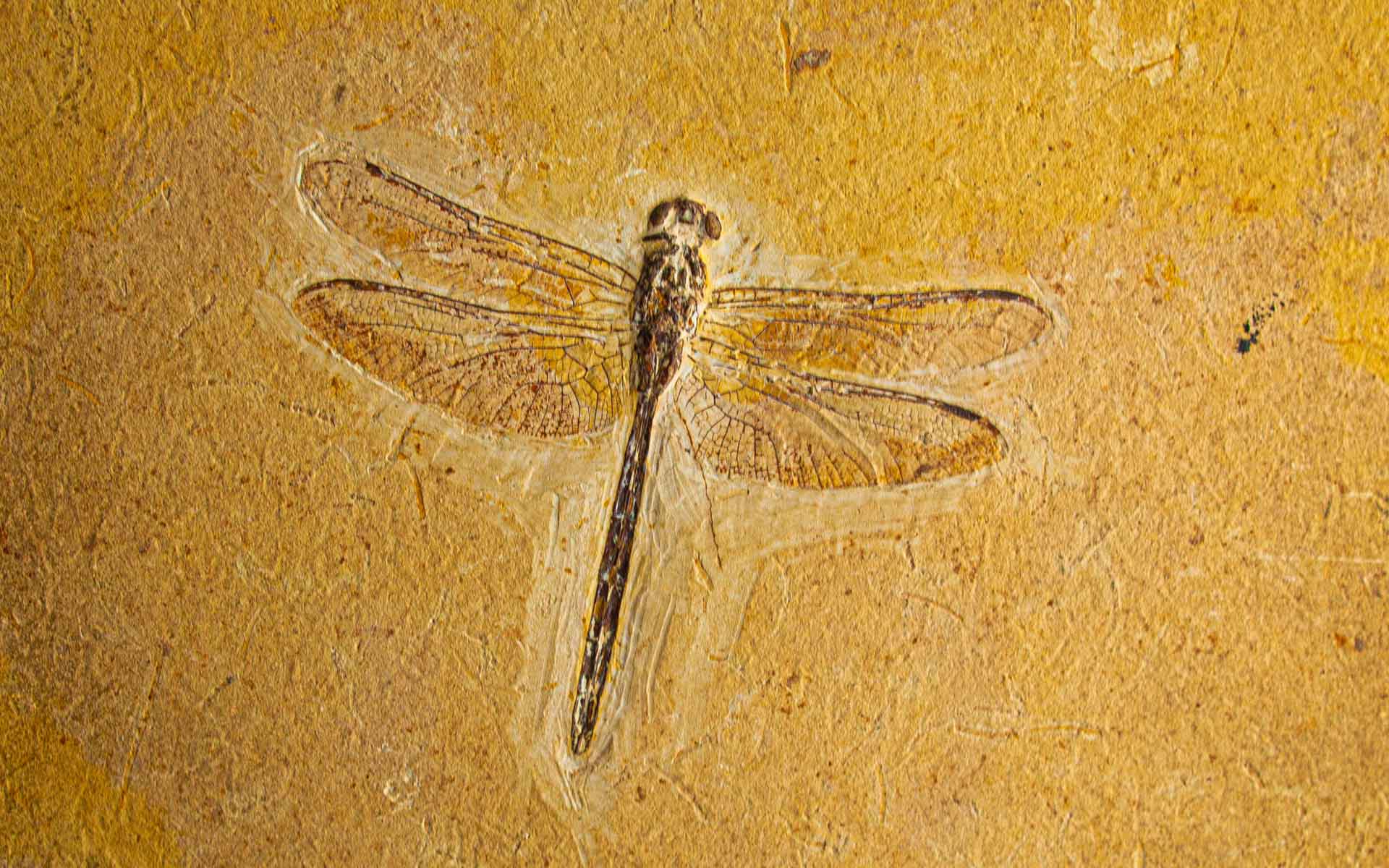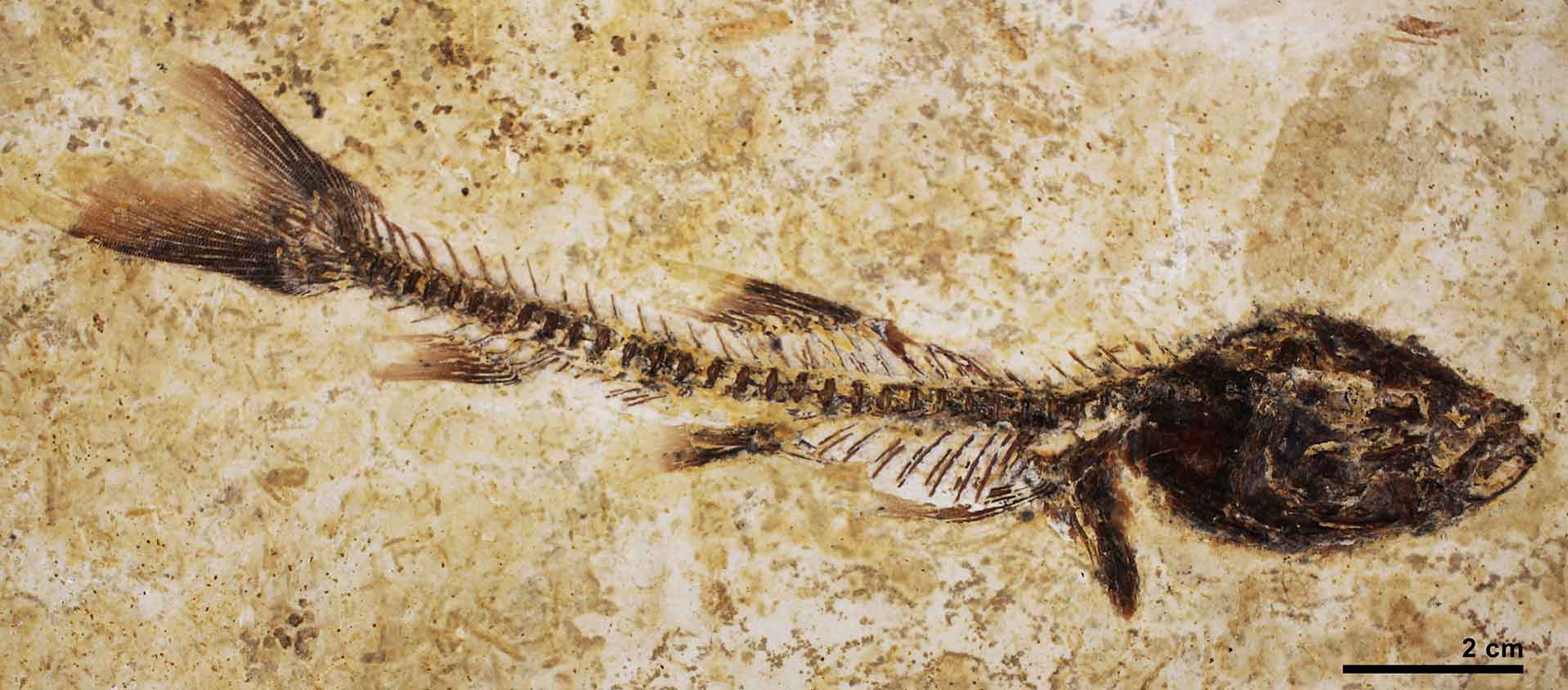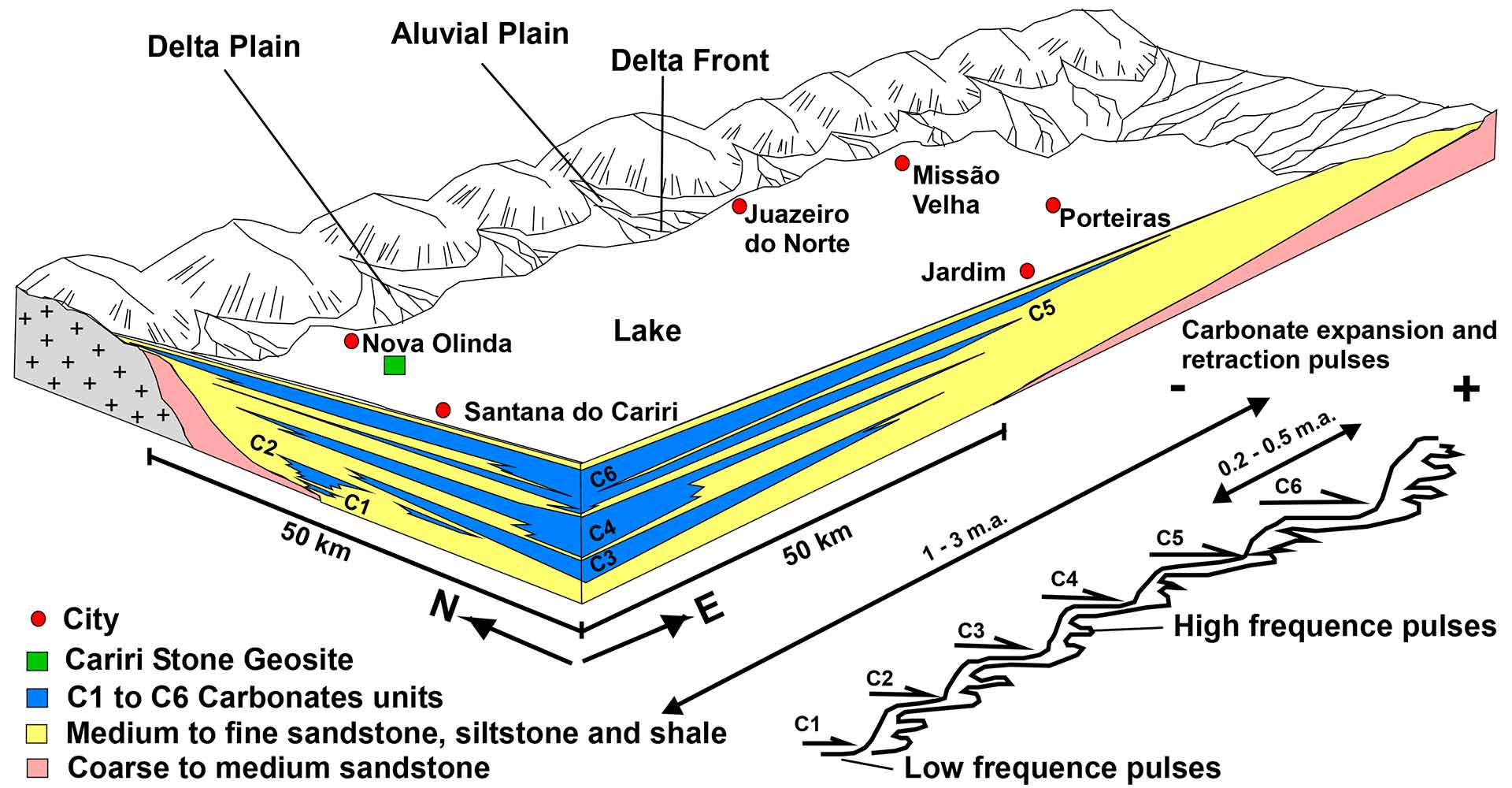
Cordulagomphus fenestratus (MPSC I 485). Fossilized dragonfly (Odonata) preserved in the Crato Formation, bearing witness to these insects’ ancient flight 110 million years ago.
Geological Period
Cretaceous
Main geological interest
Paleontology
Stratigraphy and sedimentology
Location
Cariri, Brazil
07°07’12”S, 039°41’32”W
Cordulagomphus fenestratus (MPSC I 485). Fossilized dragonfly (Odonata) preserved in the Crato Formation, bearing witness to these insects’ ancient flight 110 million years ago.
High diversity and abundance of large reptiles, dinosaurs and pterosaurs, fish, insects, crustaceans, and plants in hypersaline lacustrine deposits.
The Cretaceous Lagerstätten of the Cariri Stone is esteemed for its remarkable fossil deposits standing as a landmark in paleontological significance globally. The fossils of dinosaurs and pterosaurs, with their deep-rooted cultural significance, especially resonate with the public. Angiosperms, marking a significant evolutionary shift in the planet’s vegetation by progressively overtaking gymnosperms, are commonly found in these deposits, together with a variety of pollinating insects, potentially signaling a coevolutionary relationship between these groups. This area’s rich biodiversity attracts a significant number of scholars and sightseers and plays a crucial role in enhancing the local economy.
- Geological description
The Cretaceous Lagerstätten of Cariri Stone is situated within the territory of the Araripe Geopark, in the Araripe Sedimentary Basin, Northeast Brazil. Its name is derived from the “Pedra Cariri,” the principal sedimentary rock of the Crato Formation, part of the Santana Group. It consists of limestone layers in fine beige and gray colors that belong to the post-rift mega-sequence dated to the Aptian-Albian Age (Assine et al., 2014). It is divided into six units (C1 to C6) of laminated limestone intercalated with marls, calcareous siltstones, and shales (Neumann et al., 2003). The C6 layer is the most commercially exploited, resulting in the majority of fossils originating from this unit.
The Crato Formation represents the primary lacustrine phase of the continental succession in the Araripe Basin, often influenced by hypersaline conditions. It is characterized by a high diversity and abundance of fossils in pristine preservation, stemming from a wide range of taphonomic processes. Large reptiles such as dinosaurs and pterosaurs, fish, insects, crustaceans, and plants are among the principal groups preserved in strata, rendering the Crato Formation a crucial component in comprehending the history of life on Earth.
- Scientific research and tradition
Research on the Crato Formation began with the discovery of Dastilbe fish fossils in 1947. Limestone mining exposed these fossils, and as illegal trade intensified, institutions were established from the 1970s onwards to study, register, and designate protected areas. Since the 1980s, this deposit has been recognized as extraordinary.
- Reference
Assine, M. et al. (2014) ‘Sequências Deposicionais do Andar Alagoas (Aptiano superior) da Bacia do Araripe, Nordeste do Brasil’, Boletim de Geociencias – Petrobras, 22, pp. 3–28.
Kunzmann, L. et al. (2022) ‘Crato Flora: A 115-Million-Year-Old Window into the Cretaceous World of Brazil’, in R. Iannuzzi, R. Rößler, and L. Kunzmann (eds) Brazilian Paleofloras: From Paleozoic to Holocene. Cham: Springer International Publishing, pp. 1–40. Available at: https://doi.org/10.1007/978-3-319-90913-4_27-1.
do Nascimento, D.R., da Silva Filho, W.F. and Erthal, F. (2023) ‘Crato Lake Deposits. Rocks to Preserve an Extraordinary Fossil Lagerstätte’, in R. Iannuzzi, R. Rößler, and L. Kunzmann (eds) Brazilian Paleofloras: From Paleozoic to Holocene. Cham: Springer International Publishing, pp. 1–53. Available at: https://doi.org/10.1007/978-3-319-90913-4_28-2.
Neumann, V.H. et al. (2003) ‘Organic matter composition and distribution through the Aptian–Albian lacustrine sequences of the Araripe Basin, northeastern Brazil’, International Journal of Coal Geology, 54(1), pp. 21–40. Available at: https://doi.org/10.1016/S0166-5162(03)00018-1.
Ponte, F.C. and Ponte Filho, F. (1996) ‘Evolução tectônica e classificação da Bacia do Araripe’, Boletim do 4o Simpósio sobre o Cretáceo do Brasil UNESP, Campus de Rio Claro, Sao Paulo, pp. 123–133.
Viana, M. and Neumann, V. (2002) ‘Membro Crato da Formação Santana, Chapada do Araripe, CE’, in C. Schobbenhaus et al. (eds) Sítios Geológicos e Paleontológicos do Brasil. Brasilia: DNPM/CPRM – Comissão Brasileira de Sítios Geológicos e Paleobiológicos (SIGEP), pp. 113–120.
- Author(s)
Maria Somália Sales Viana.
Federal University of Ceará, ProGEO. Brazil.
Virginio Henrique de Miranda Lopes Neumann.
Federal University of Pernambuco. Brazil.
Allysson Pontes Pinheiro.
Regional University of Cariri. Brazil.
Maria Edenilce Peixoto Batista.
Regional University of Cariri. Brazil.
Wellington Ferreira da Silva Filho.
Federal University of Ceará. Brazil.
Olga Alcântara Barros.
Regional University of Cariri. Brazil.
Maria da Glória Motta Garcia.
University of São Paulo. Brazil.


